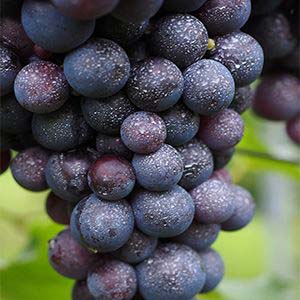 DELIVERY FROM £4.95
DELIVERY FROM £4.95 FREE DELIVERY FOR ORDERS OVER £100
FREE DELIVERY FOR ORDERS OVER £100Home » Community » Wine and Grape Guide » Corbina

The Corbina grape is a historic red grape variety native to Veneto. It is often confused with the better-known Corvina, especially due to the similarity in names and overlapping historical references. However, despite being grouped together in older ampelographic texts, Corbina and Corvina are distinct varieties - a fact clarified only in the early 20th century by the agronomist Marzotto.
In the 19th century, the Corbina - also referred to as Corbino - was widely cultivated throughout Veneto. By the end of that century, the nobleman and agronomist Lampertico documented at least nine distinct types of Corbina grapes, divided into three groups. In the past, both Corbina and Corvina were grown in the Verona area, though Corvina came to dominate in premium wine-producing areas like Valpolicella and Bardolino, while Corbina remained in more rural zones, particularly around Legnago, in the lower Verona plains.
Today, Corbina vines are found primarily in the provinces of Vicenza, Padua, and Treviso, although their presence is now limited. Following the devastation caused by phylloxera in the late 19th century, Corbina was largely excluded from recommended replantings. Its naturally rough character, high pigmentation, and marked tannic structure made it less desirable than smoother, more elegant varieties like Corvina, contributing to its decline.
The Corbina grape features black, medium-sized, spheroid berries with thick, blue-black waxy skin. The clusters are medium in size and density, while the leaves are medium, pentagonal, and typically five-lobed. The vine shows moderate vigor, with low yields in hilly areas but more abundant production in lower plains.
When vinified, Corbina yields deep ruby-red wines with fruity aromas, particularly black cherry. On the palate, it is noted for its firm acidity and robust tannins, giving the wine a slightly rustic feel. Because of this acidity and tannic edge, Corbina is often best suited for sparkling wine production, especially sweet versions, where residual sugar helps balance its bold character.



Before we say ciao, why not join our newsletter & stay up to date on everything happening on planet Italyabroad.com